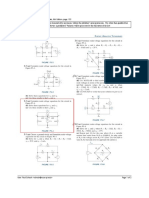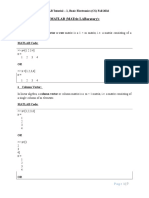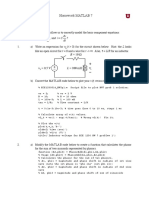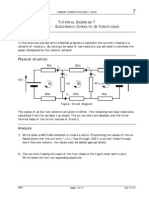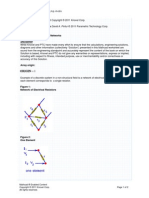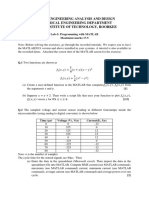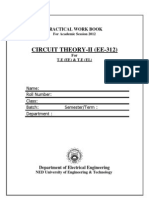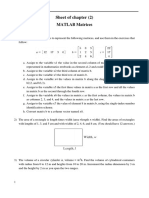0% found this document useful (0 votes)
13 views23 pagesGROUP IX Final Simulation
The document details a MATLAB simulation conducted by Electrical Group IX, consisting of five members, focusing on various electrical circuit analyses. It includes multiple questions that cover nodal analysis, loop analysis, and power transfer calculations, providing MATLAB scripts and results for each scenario. The results demonstrate the computed voltages, currents, and power dissipation across different configurations and components.
Uploaded by
erickchuguCopyright
© © All Rights Reserved
We take content rights seriously. If you suspect this is your content, claim it here.
Available Formats
Download as PDF, TXT or read online on Scribd
0% found this document useful (0 votes)
13 views23 pagesGROUP IX Final Simulation
The document details a MATLAB simulation conducted by Electrical Group IX, consisting of five members, focusing on various electrical circuit analyses. It includes multiple questions that cover nodal analysis, loop analysis, and power transfer calculations, providing MATLAB scripts and results for each scenario. The results demonstrate the computed voltages, currents, and power dissipation across different configurations and components.
Uploaded by
erickchuguCopyright
© © All Rights Reserved
We take content rights seriously. If you suspect this is your content, claim it here.
Available Formats
Download as PDF, TXT or read online on Scribd
/ 23









